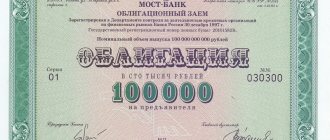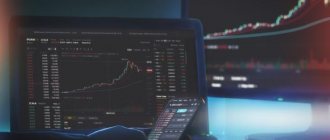Therefore, it is necessary to understand the trading rules and indices that may affect the final result.
What is an option?
Options are a class of derivative financial instruments.
The term “derivative” means that the payout under such a contract depends on the price of some underlying asset (underlying). The name seems to hint that such a tool provides some kind of optionality, that is, the ability to choose. But since there are two participants in the transaction, one of them receives the opportunity, and the other, on the contrary, undertakes the obligation that he will provide such an opportunity to choose.
Vanilla flavor
There are quite a large number of different options contracts.
There are simpler ones, there are more complex ones, with bells and whistles, and there are even more complex ones. In English, simple options are called plain vanilla option. According to the Internet, this is because the simplest and cheapest ice cream in an American stall was vanilla.
And the most vanilla option is the European option.
European option
A European option is a contract under which the buyer of the contract receives the right, but not the obligation, to buy or sell an underlying asset at a pre-agreed price at a time specified in the contract in the future.
The underlying asset can be a stock or a foreign exchange rate. An option on the exchange rate is called an FX option; it gives the right to exchange one currency for another at a pre-fixed rate. The market rate for the underlying asset is called spot and is denoted in formulas as St.
An option that gives the right to buy the underlying asset is called a call option. The right to sell is a put option. The price at which an option gives the right to enter into a transaction in the future is called a strike, denoted by .
The time specified in advance in the contract at which the option can be exercised is the option expiration date (expiry date).
About us: Admiral Markets
Trading the financial instruments (CFDs, shares, ETFs) offered by Admiral Markets carries a high level of risk which is not suitable for all investors due to the complex nature of the financial markets. Please be sure to review our terms of service before entering into a customer agreement or completing a transaction. If necessary, consult with a professional to ensure you understand the risks associated with trading.
This article is published for informational and educational purposes only. The content is developed by Admiral Markets UK and distributed by Admiral Markets Group investment firms to a global audience. Therefore, please understand that the information contained in this article may not be suitable for everyone. For relevant information regarding schedules, trading conditions and any other details, please visit admiralmarkets.com, select your country of residence and contact the relevant organization. This content is for general information only and is not intended to provide trading or investment advice or personal recommendations. Any information regarding past trading performance does not necessarily guarantee future results. Admiral Markets is not responsible for any losses you incur, directly or indirectly, as a result of making any trading decisions based on any information in the above published content.
The information is not directed at residents of the United States, Belgium or any particular country and is not intended for distribution to or use by any person in any country or jurisdiction where such distribution or use would be contrary to local law or regulation.
Why is this necessary?
Option as insurance
Essentially similar to an option and a familiar contract to everyone, it is insurance. Anyone who buys insurance receives the right, under certain conditions, to receive an insurance premium, and the insurance company undertakes to pay this premium. And here are a couple of examples.
Business Koli
Kolya is the owner of a jig production business.
Everyone needs a good jig, so Kolya is doing well. He entered the international market and sells jigs abroad. For example, production is located in a country where the currency XXX, widely known in academic literature, is used, and jigs are sold abroad to a country where another well-known currency, YYY, is used. Planning and managing the highly competitive jig business takes Kolya a lot of time and effort. And then there’s a new problem - the changing exchange rate of the YYY currency for the XXX currency. This exchange rate is designated XXXYYY.
Kolya knows the business well and can quite accurately say that in six months he will have a profit of 1 to 3 million YYY. They will need to be converted into XXX currency in order to pay salaries, rent, taxes and invest something in business development. What to do if during this time the XXXYYY rate goes up? Kolya is confident enough that he will definitely need to convert one million, so he can enter into a forward contract for one million XXXYYY. But there are another two million that he is not so sure about. Therefore, Kolya buys a call option on the XXXYYY currency pair.
Kolya bought a call option and will receive a payment at expiration:
If at the time of option expiration the market exchange rate ST was less than the strike, i.e. ST < K, then it is not profitable to use the Kolya option; it is cheaper to simply exchange the currency at the current rate. The option does not impose any obligations on Kolya in this case. By analogy with insurance, the “insured event” did not occur.
But if the exchange rate goes up, then Kolya will definitely want to exchange the currency at a rate equal to the option strike, which in this case will be more profitable than the market one.
Petit speculator strategy
Options are also used in various stock trading strategies.
Petya is a stock speculator and he has a super-ML-AI-crystal-ball-algorithm that predicts that in a month the shares of some company XYZ will plummet in price. Therefore, Petya buys a put option on XYZ stock. Those. the right to sell a share at the rate (option strike).
If the stock price at the time of expiration of the option (ST) really turned out to be below the strike, then Petya can buy the share on the market cheaper and sell this share, taking advantage of the right that the option gives him. Thus, Petya will make a profit: .
But if the stock price nevertheless goes in the other direction and turns out to be greater than the option strike, then the Petit option gives nothing, and the option payout is zero.
Petya bought a put option and at the time the option is exercised he will receive a payment: .
These examples do not mean that a put option is only for speculators, and a call option is for hedging risks. If Petit’s model predicted an increase in the exchange rate, then he would need a call option, and if Kolya’s business had developed in such a way that he needed to plan a currency exchange in the other direction, then the choice would be a put option.
It can be seen that the practical use of options in speculative strategies on the exchange rate of the underlying asset only requires correctly guessing which inequalities will be true for prices in the future. It's not that difficult (just kidding). The same applies to the use of combinations of vanilla options, which will be discussed below.
Trading on CME micro futures (master class)
Author: admin
Good day to everyone, dears!
The expert community (especially on Facebook) is actively discussing whether the market is in an overheated state, whether a second 1999 is approaching us (if you remember, this year there was a bubble in shares of technology companies and its subsequent painful deflation). Now the situation is more complicated - the Fed and national governments are at play: the bubble may continue to inflate for a long time. But in my opinion, the market is still showing dangerous signals of overbought and “red calendar days” may appear more and more, and if there are any noticeable changes in the debt markets and inflation indicators (Consumer price index), then a “deflation” is possible. parts of heated stocks, and with them a correction throughout the market.
Therefore, those who trade, and not just invest through mobile applications, ask themselves the question - how to protect themselves and make money in a situation, if not panic, then at least a powerful sell-off (and increased volatility). This is difficult to do on traditional instruments - shorting shares is dangerous, given that they can open with a gap up the next day. Crypto is not bad, but Bitcoin also tends to fall during stock market crashes (we saw this in 2021)
Therefore, in such a situation, traders usually look for opportunities to work on derivatives, and this is correct (futures, options).
In connection with the above, and requests on this topic, I decided to make a master class dedicated to a rather interesting topic - trading on “CME micro futures”.
What it is? Conventional futures are more or less familiar to everyone - ES, NQ, 6E, CL and others.
Micro futures provide the opportunity to enter into the same stock futures, but with 10 times less risk. It is quite possible to work on them without excess load on accounts from 3-5K, and in the event of a market collapse, double or triple such an account. The CME exchange launched “micros” in 2021 and then they were not yet liquid enough for active trading, but now the situation is different.
In general, come to the master class on Saturday, February 20 (13 Moscow time), I will share useful experience and knowledge on the topic. I will also be doing a replay of recent trades on MES, MNQ and M2K.
UPD: Due to a holiday in the Russian Federation, the master class will be postponed (a new date will be later). You can sign up now if you are interested in participating and I will automatically sign you up for a new date.
Note! New time: March 13, Saturday, 13-00 Moscow time
All information about the master class is here.
If you have questions, write to @bernuhov in telegram or email
Good luck and have a great week!
Category: Review Diary (0) February 2021
In-the-money option and out-of-the-money option
When the price of the underlying asset at expiration is such that the option payout is zero, the option is said to have ended out-of-the-money (OTM) .
For a call option this means ST < K, for a put option - ST > K. If the rate is on the other side of the strike, then they say that the option turned out to be in-the-money (ITM) . The case of equality ST = K is called at-the-money (ATM) .
At the time the option contract is concluded, no one knows what the price of the underlying asset will be at the time the option is exercised. But the current price of the asset is known to everyone. If we apply discount rules to the current price, we can calculate the fair price of a forward contract for this underlying asset with a delivery time equal to the option expiration time. This is called at-the-money forward (ATMF) . Knowing this price, you can divide options that have not yet expired into ITM and OTM, depending on the option strike.
For strikes less than the ATMF, call options will be in-the-money and put options will be out-of-the-money. For strikes larger than ATMF, the opposite will happen.
Formally, you can define both call and put options for any strike, but in practice at-the-money-forward and out-of-the-money options will be liquid. After all, if the option strike is deep in the in-the-money zone, then the probability that the option will be exercised is estimated by the market to be close to one, and the price of such a contract is determined more by discounting than by the optionality specified by the option strike. Sometimes you can trade ITM options, but only if their strike is close enough to the ATMF level.
Alternative assets for investment
Among the analogues I will highlight:
- ETF funds are the simplest method of portfolio investment. For example, an ETF with the ticker symbol SPY replicates the entire S&P 500 index and is rock-solid.
- Mutual funds are similar to ETFs, but with a higher commission.
- Investing in securities directly, the investment portfolio is created manually. If you are just starting to work in this direction, the article “How to invest in stocks for a beginner” will be useful.
- Working with bonds – they provide coupon income and stable profits over the long term. I recommend them primarily as a highly profitable analogue of a foreign currency deposit in a bank.
- Futures are a less flexible instrument compared to options, but this does not make them less profitable.
- Forex is a riskier type of trading compared to the stock market.
- Binary options are the maximum risk, it is difficult to make money here. This is analogous to financial betting.
- PAMM (as well as RAMM, LAMM, MAM accounts). This is earnings through trading in passive mode, a subtype of trust management.
Open an account with BCS for investing
Nobody forces you to concentrate on one direction. You can work with options and at the same time form a long-term investment portfolio, and invest some of your money in cryptocurrency.
Fantastic options and where they live
So where can you buy an option?
The answer, as often happens, begins with the words “it depends...”. First of all, it depends on what underlying asset you want to buy an option on. Stock markets, exchange rates, interest rates, commodity exchanges (commodity) differ from each other. Naturally, trading options on different underlying assets has its own characteristics.
Exchange
Let's start with stock options.
Shares are usually bought and sold on an exchange. For an option contract, this is convenient because there is a good source of the stock price, incl. It is easy to determine the value of the option at the time of expiration. This rate, from the option point of view, is the spot rate. You can even use some popular stock price index, such as the S&P500, as a spot rate for an option. Trading securities through an exchange is such a successful idea that stock options are also traded on an exchange. For example, on the Chicago Board Options Exchange. In order to organize options trading on the stock exchange, it is necessary to standardize the parameters of options. For a vanilla option, these are: the underlying asset, the strike, and the expiry.
Moreover, in order for trading an option with given parameters on the stock exchange to make sense, it is necessary that this option option be sufficiently liquid, i.e. for him there would be a sufficient number of people willing to buy and sell.
Non-exchange
Not everyone and not always have enough of the options that can be bought on the stock exchange.
What to do? Buy or sell not on the stock exchange! Such transactions are called over-the-counter (OTC). In principle, this can be a transaction between any market participants. But where OTC markets arise, there is someone who specializes in providing quotes (and therefore the ability to buy/sell): market makers. With the development of computers and digital communication channels, OTC markets have changed greatly. Previously, for such a transaction it was necessary to call the market maker or intermediary by phone. Now everything can be done through specialized programs. There are software interfaces for receiving quotes and making trades for use in trading robots. In active markets, there are aggregators that will automatically find the best buy and sell offer for a given contract automatically by asking different market makers. In many ways, at least from the point of view of liquidity, availability of current quotes and ease of entering into a transaction, this is no longer much different from trading on the stock exchange. An example of a successful OTC market is the foreign exchange market and the FX market. And options on it are also actively traded.
The advantage of the OTC market is that there is no need to introduce standards for the contracts that can be traded. Therefore, the market maker can provide clients with the opportunity to request a price for any contract for which the market maker is able to calculate the price.
For vanilla options, this means arbitrary strike and expiration values. But this is just the beginning. There are many different variants of options besides vanilla options. Anything that is not a vanilla option is called an exotic option, or exotic for short.
I will tell you about some exotics below. Now it is important to note that each type of exotic options also has other parameters that vanilla options do not have, and the problem of standardizing contracts for exchange trading becomes even more acute. After all, exchange trading makes sense only for fairly liquid contracts; on the exchange you can only buy what someone else wants to sell. So exotic options are traded only on the OTC market.
Derivatives on derivatives
Not only spot transactions, but also all sorts of derivative instruments are actively traded on financial markets.
Futures, swaps, etc. And yes, there are options on them too. For example, exchange rates for oil and other commodities are futures rates. Accordingly, an option on oil is an option on futures.
Options on currency futures are also traded on exchanges, for example on the Chicago Mercantile Exchange (CME)
If you have already asked the question: “Do options on options exist?”, then the answer is: yes, they do exist. If there is potential demand for an option and the market maker has the capacity to undertake such obligations, i.e. understanding how to calculate the price and how to then manage risks (hedge) such a contract, then the market will sooner or later respond to such demand with supply.
The more different products a market maker can offer, the more different customers it can attract. You also need to understand that in the options market, like in any other financial product market, there are purchase prices and sale prices, the difference between them is called the spread, and this is the main source of income for the market maker. Naturally, the spread is narrower for more liquid products, and wider for less liquid products.
But let's go back to vanilla options and look at examples of products made up of them.
Answers to questions #2
Author: admin
Greetings dear!
Let’s continue the “answers-questions” section, built on the basis of your questions (I remind you that you can send them through the form:
I do not post all the materials from the telegram channel on the blog; you will find more information on the channel.
So, let's go!
“What profit factor can be considered good in your trading style? Sharpe?
Read completely "
Category: Review Diary (1) April 2021
Vanilla strategies
We know what the payout schedule for call and put options looks like, but there are a couple more obvious things to mention.
First, options can be either bought or sold. In financial market jargon, we say that we are long option if we bought an option, and that we are short option if we sold the option. The payoff for a short position in an option is equal to the payout for a long position with the opposite sign. Secondly, in order to buy an option (take a long position), you need to pay a premium, and the party that assumes obligations under the option (short position) receives a premium for this. Incl. It makes sense to consider not only the option payment, but also the total profit taking into account the premium.
We get four options. The dotted lines show graphs of the payout functions (without taking into account the premium), and the solid lines show the profit/loss function taking into account the premium:
The next simple idea is that options can be bought and sold not individually, but in combinations. Some combinations are so popular and important to the market that they have established names.
Balance Combination: Straddle
The first combination on our list is straddle. It turns out if you add up call and put options with the same strike. ATM straddle is especially popular, i.e. both options have a strike equal to the at-the-money forward.
In this picture, the dotted line shows the profit on individual options (taking into account the premium). And the solid line is their sum, i.e. profit for the entire structure, naturally also taking into account the bonus.
If you look at straddle as a speculative strategy on the price of the underlying asset, then if you buy straddle, you will make a profit if the price level of the underlying asset goes far enough from the at-the-money level, and it does not matter in which direction.
If you have already heard something about options and know what an option delta is, then you can clarify that for some underlying assets they prefer to use not an ATMF straddle, but a deltoneutral (DN) straddle. Those. The strike is chosen so that the delta of the put and call options adds up to zero.
Association game: Strangle
Look at this picture. What associations do you have?
The common name for a combination of vanilla options with this payout is strangle.
The English dictionary says that strangle is “to kill someone by pressing their throat so that they cannot breathe.” Those. we are talking about strangulation. Why such a brutal name arose for such a payout function, I don’t know. Apparently, this is how Wall Street options traders' associations worked in the early 20th century. On the other hand, it could have been worse. You could call it "chainsaw massacre", for example.
From the point of view of option strategies, strangle is a put + call, with different strikes. Similar to straddle, but due to the fact that in this combination the option strikes are in the OTM zone, these options are cheaper than ATMF options. Consequently, the whole combination will be cheaper than ATMF straddle.
For a speculator, strangle has approximately the same meaning as straddle, with the difference that strangle is cheaper, but to make a profit, the rate needs to move further away from the ATM level.
Pros and cons of working with options for beginners
Let's start with the strengths of this type of trading:
- The Put and Call option is an extremely simple instrument. It is enough to understand its nature, and after a couple of weeks of work you will master all the nuances.
- Low requirements for the starting deposit .
- Possibility of flexible risk management , profit and loss . This is the most flexible financial instrument.
- Thousands of assets , even weather contracts available.
drawback - the misperception of this tool by beginners. Due to a lack of understanding of its nature at the initial stage, traders can lose all their money and even take the account balance into the negative.
Risk Reversal
The next combination is risk reversal.
We buy an OTM call option and sell an OTM put option. From the point of view of a speculative strategy, this is a fairly aggressive bet that the price of the underlying asset will go up. Because We sell a put option and receive a premium for it, then the cost of such a bet will be lower, but if the rate goes down, our problems will be greater.
Butterfly
To construct a payout according to a structure called “butterfly”, two options are no longer enough.
In the figure below, this combination is replicated using call options as follows: we buy options with strikes 28 and 32 with a par of 1 and sell an option with a strike of 30 with a par of 2. The same payoff can be constructed if we buy strangle and sell straddle. And this is usually what they do in practice.
Replicating this payoff only through call options, as in the figure, is interesting in the following ways. Let's denote the central strike in the structure as , and the difference between this strike and the other two as . Then the price of such a structure will be equal to . In this form, it is similar to a difference scheme for calculating the second derivative. Of course, for this you need to tend to zero, and such data cannot be obtained directly from market quotes, but in some cases, using the quotes that are available, you can get a good approximation. Or at least a meaningful numerical estimate of the convexity of a function.
Sometimes this property is convenient for theoretical analysis. In books you can see discussions where infinitely small “butterflies” are considered. Those. butterfly structure, in which the difference between strikes tends to zero.
On this site you can experiment with the parameters for these and some other vanilla option combinations.
How options trading differs from futures
If we describe what options and futures are in simple words, the key difference is flexibility :
- When dealing with options, the buyer acquires the right to buy and sell the underlying asset in the future.
- When dealing with futures, the parties agree on a deal that is delayed in time. The buyer has no choice regarding the execution of the transaction at expiration.
Both types of instruments can be seen as a dispute between 2 parties about what the price will be after a certain time. When purchasing a deliverable futures contract, for example, on Gazprom shares, the buyer actually purchases the securities of this company, but with a time delay. At expiration, he will receive shares at a price agreed in advance.
Example with Gazprom futures
The figure below shows September futures for Gazprom shares. Let's assume that the purchase of 1 contract is completed on July 17, 2021. at a price of RUB 18,596. (1 futures implies the purchase of 100 securities). If you do not close the contract with a counter position and do not extend it, then in September there are 2 options:
- The price of the underlying asset will increase , for example, to 250 rubles. per security, then the buyer will still be able to buy shares at 185.96 rubles.
- The price will drop , for example, to 150 rubles. for 1 security, the trader still buys them for 185.96 rubles. for one. In fact, he loses 35.96 rubles. on every share. But usually futures are used for speculative transactions and rarely held until expiration. For them, the result is either fixed by counter positions, or the contract is transferred to the next month.
When working with options in the same situation, the trader could exercise the contract if was favorable for him. If the stock price is falling, there is no point in doing it. It is more profitable to lose the premium paid when purchasing the contract and not exercise the right to purchase Gazprom securities. This is the key difference between futures and options.
If we are talking about the margined type, the difference is no longer so obvious. the guarantee collateral is blocked on the account . During clearing, variation margin is paid, positions are constantly revalued. During expiration, the corresponding futures instead of the option.
Barriers to Expair
Let's return to the payoff function of one option.
For example, take the ATMF call option. For the person who purchased it, this contract seems to fix the future rate of the asset at the time the option is exercised, if the rate turns out to be higher than the ATMF level. The ATMF level is some current estimate of the “fair” rate at the time of expiration, but, of course, the real value of this rate in the future is a random variable. Nobody knows exactly what will happen to the exchange rate. But it can still be said that one course level is more likely than another. And we can say that the probability of exchange rate values far from ATMF is less than those close to them. But a regular call option works for all possible exchange rates greater than the strike. And this, by the way, is included in his bonus. Is it possible not to pay for this if we estimate the probability of exceeding a certain level as zero?
If such a thought comes to mind, then it would be a good idea to find out how much such a play-off will cost (the graph shows the payment without taking into account the bonus):
Or this:
If the market maker's clients are interested in such products, then the market maker must be able to calculate prices for them.
The first payoff function can be easily replicated using two call options. One option needs to be bought, the other one must be sold.
The second playoff is called a barrier option. In this case, the barrier acts only on expairs; a barrier with this rule is sometimes called a European barrier. And the effect of the barrier in this case is that when the spot crosses the barrier, the option seems to “knock out”. This is called a "knockout barrier".
There may also be a knockin barrier. The owner of such an option will receive a payment only if the asset price at expiration has moved far enough from the strike:
In this example, the option strike is 100 and the KI barrier is 115.
Answers to questions #1
Author: admin
Hello everyone, dear ones!
Just recently, I conducted an experiment on a telegram channel - I invited readers to ask questions through a form. It turns out to be a rather interesting format, a kind of “Letters to the Editor.” I think we'll make this a common practice.
The question form is here:
So, let's go. First issue of “Letters to the Editor”)
“What should you do first if you reach a dead end in your trading results? And is it possible that, for example, the results on Forex were unprofitable, but by changing the market to, for example, futures or stocks, trading went uphill at a tremendous pace?”
Read completely "
Category: Review Diary (0) April 2021
Binary options
In order to replicate the payout with European barriers, simple vanilla options are not enough.
We need options with the same escape rules as European options, but the payout function for which looks like a step. Such options are called binary options in Russian. There are two names in English: binary option and digital option.
Binary options themselves are a purely speculative instrument, like a lottery ticket. If the rate is below the strike, the owner of the binary call option receives a fixed payment; if not, then he receives nothing. But if they are part of an EKI or EKO play-off, they can help choose the parameters (and therefore the price) of insurance against unfavorable movements in the underlying asset that are more suitable for a particular case.
Can Beginners Make Money Trading Options?
The very concept of “no money” is somewhat arbitrary; it refers to newcomers with relatively small deposits. With zero capital it is impossible to make money in any of the markets.
The financial requirements for beginners are relatively small. Deposit of 10-15 thousand rubles . more than enough for experiments in trading.
When it comes to income, we recommend not viewing options as a holy grail. This instrument can indeed provide high returns in some cases, but it is better not to take risks and use conservative strategies. At the starting stage, remember the basic rule - never make “naked” option sales . For such positions, the loss is not limited; you can not only lose your deposit, but also go into the red.
Vanilla is different from vanilla
In addition to European options, there are also American options .
The difference is that a European option can only be exercised at expiration. And the American option is also available at any time before.
Such geographical names are apparently connected with the fact that at some point one type of options was popular in European markets, and another in American markets. But today these are just established terms.
American options are often traded on stock exchanges. And in general, they are quite common. And they can also be classified as vanilla options rather than exotic.
About the trader's intuition (intuition or system).
Author: admin
Greetings, friends!
Let's continue the series of questions and answers.
Today is a long question, which I have broken into several parts) And again on trading psychology. This topic traditionally generates a lot of interest.
“Today, I would like to ask, have you read Curtis Face’s book “Trading Based on Intuition,” and if you have, have you applied any of it? For me, the point is not even in intuition (the title), but in the topics that are revealed and raised there, that there are a lot of thoughts and ideas in the book that made a strong impression on me, perhaps in vain, but sometimes I use it, controlling the risks. The result is positive, mostly.”
Read completely "
Category: Review Diary (8) April 2021
Continuous barriers
The most real exotic options are barrier options.
In such options there is a barrier, but unlike European barriers, which apply only to expiration, here we mean a barrier that is valid throughout the life of the option. Such barriers are called either continuous or American. If they talk about a barrier without specifying anything, they usually mean just such barriers. A continuous barrier can also be placed in the OTM range of the underlying asset rate relative to the option strike, which does not make sense for a European barrier. And in general, here the number of possible options increases. You can define a barrier option with two barriers (upper and lower). You can make one barrier of the knockout type, and another of the knockin type... There are many options, some more popular, some rare. Such exotic goods are traded, of course, on the OTC market.
What is important about this type of exotic is that its final payment depends not only on the price of the asset at expiration, but also on the entire path that the random process of the underlying asset’s rate has taken from the moment the contract was concluded to the expiration.
Final stream of the year (and New Year's promotion of the project)
Author: admin
Good day everyone!
Well, we are already at the finish line of the most unusual year, two thousand and twentieth. On this occasion, you can soon raise a glass of lemonade or Veuve Clicquot, depending on how you traded this year))
We will do a big stream on Saturday (11-30 Moscow time) and comprehend what is happening in the markets this year, prepare for the next one. Join in, I’m preparing interesting materials) You can connect to the broadcast using the link below or simply by subscribing to the channel (and clicking on the bell).
PS And, of course, what would a New Year be without gifts? From now ( 12/22 ) until 30 there will be a 15% on any educational program of the project. For example, you can apply a discount to participation in the “Tradeology” group, which starts in January. (use coupon NY2020 on the payment page)
Category: Review Diary (0) December 2020
Asian options
Another typical example of an option, the price of which depends not only on the value that the spot reached on the escape route, but also on the entire path, or at least on the prices realized at some predetermined points along this path.
The Asian option uses averaging of such intermediate values. For example, this can be done this way: to determine the payout according to the call option rule, it is not the spot value at expiration that is taken, but the average value. And the payment will be equal. Such an option is less sensitive to short-term deviations in the price of the underlying asset, which may occur accidentally at the time the option is exercised.
Options that depend on the realized spot path, such as Asian and continuous barrier options, typically require the use of more complex models and more expensive computational methods.
“Tradeology”. winter flow
Author: admin
Hi all!
You asked - we did) I decided at the beginning of next year to open another stream of a three-month program to work in the main liquid markets (currencies, stock indices, gold/oil). Someone did not have time to get to the autumn stream of the program, and now there will be an opportunity to join the winter stream. (starts 2 months from now).
Description of the program here.
Let me remind you briefly: The program lasts 10 weeks, during which we step-by-step build a systematic trading process based on three main tactics (trend-following, impulse and counter-trend). Every week there are live webinars with analysis + access to pre-recorded videos.
Well, since yesterday was my anniversary (40 years), I’m giving away gifts: during this week there will be a 30% discount. (send your application to https://www.tradeology.ru/, I will tell you how to connect to the group).
Stay healthy and see you!
Category: Review Diary (2) November 2020
A little about modeling
So, now it is generally clear what contracts participants in the options market have to deal with. Now we can say a few words about what tasks, for example, a market maker needs to solve in order for his activities in the market to be successful.
Pricing
On an exchange or OTC market, you can get prices for liquid call and put options at different expirations and different strikes.
This will be a certain number of points with parameters. But you need to be able to work not only with these options, but also with other strikes, other expirations and exotic options. For this purpose, models are built based on the results of non-school probability theory (stochastic differential equations, martingale measure, etc.). If you look at what these models do from a bird's eye view, they answer questions like "how to calculate the price for a vanilla option for which there is no quota in the market, based on the prices that are there?" or “how, having this data on the prices of liquid vanilla options, calculate the prices of more complex contracts - binary, or with continuous barriers, or any other exotic?”
Here it turns out to be convenient, or at least generally accepted, to talk about some characteristic that is associated with the probabilities of realizing different possible values of the exchange rate of the underlying asset and is a function of the parameters. This characteristic is called “implied volatility”. Because This is a function of two parameters, then we talk about the volatility surface. If the expiration is fixed, then it is a function of one variable, and then they talk about the “smile” of volatility.
From an options traders' perspective, options trading is volatility trading. And speculative strategies using one or more vanilla options can be aimed specifically at volatility speculation.
“Trading abstract volatility in a vacuum”
Usually, for the calculations that need to be made, there is no solution in analytical form and it is necessary to use computational methods. Typical computational methods that are used are numerical solution of partial differential equations and the Monte Carlo method.
Position Management: Dynamic Hedging
Mathematical models and computational methods help to calculate the prices of different options in accordance with other prices of more liquid instruments.
But this is only one side of the problem. Prices reflect current market expectations. These expectations change, and no one knows what will be realized in the future. Clients come to the market maker and want to make a deal with him: some in order to get insurance, others in order to implement some kind of speculative strategy. The client chooses which transactions will be requested and when. The market maker must be willing to assume the appropriate obligations for the option. To do this, he needs some kind of algorithm of actions on how to fulfill these obligations. Some kind of technology that would help him replicate the option payout, regardless of what happens in the market. Sounds too good to be true? This is partly true, but, nevertheless, there is technology that comes surprisingly close to this.
The technology is called dynamic hedging. The bottom line is that we calculate certain risk indicators for our position and periodically buy some instruments on the market that compensate for these risks. A typical example of such risk is delta, the partial derivative of the price of a derivative with respect to the exchange rate of the underlying asset. In order to compensate for the delta, you simply need to buy the underlying asset in an amount equal to the delta, and with the opposite sign. What does short selling mean? A strategy based on delta hedging is called (surprise!) delta hedging .
Using mathematical models that typically make assumptions that are not usually met in practice, it can be shown that delta hedging can mathematically exactly replicate the payoff of an option. In this case, you just need, in addition to all the simplifications and assumptions included in the model, to direct the period between portfolio rebalancing to zero. This is how option replication works using delta hedging in the famous Black-Scholes model.
Despite the fact that rigorous mathematical proof requires neglecting many things that are important in practice, the very idea of dynamic hedging turns out to be surprisingly resistant to the fact that many of these assumptions do not hold in practice. This is what allows the market maker to engage in his activities, significantly reducing the risk he takes on.
Here it doesn’t hurt for a market maker to have a large client base with diverse interests. Of course, how a market maker finds the buy and sell quote for volatility is conceptually similar to how a market maker finds that quote in the spot market. The difference is that for each asset you need to find not two prices, but purchase and sale quotas for implied volatility for those strike and expiration values that are considered reasonable in the market. This usually means that at a minimum you need to have these buy and sell quotas for several reference points and calibrate the model parameters so that the model matches them.
The points to which the model needs to be calibrated can be specified in different ways. In the FX options market, the reference points are quotes on straddle, risk reversal and butterfly.
How to start trading options with CFDs
A CFD, like an option, is also a derivative product that allows traders to speculate on the rise and fall of the market.
CFD trading is essentially a contract between two parties, the buyer and the seller. It stipulates that the seller will pay the buyer the difference between the current market value and the value when the contract ends.
In this case, the seller is usually your broker. With a CFD, a trader simply pays the difference between the opening and closing prices of the underlying instrument.
Unlike options trading, where a one-point move within the underlying does not always equal a one-point move in the options contract, a CFD tracks the underlying instrument much more closely. Here are some key differences between options trading and CFD trading:
| Options trading | CFD trading |
| Contract expiration dates - the market may continue to move in your favor after your option expires, so you may not profit from the move | Typically there is no expiration date |
| Not all stocks and instruments are available for trading with options | Traders can trade more than 3,000 instruments |
| Subject to unlimited losses | Traders can use stop loss orders and volatility protection to manage risk |
| Options decline in value over time and are seen as a "waste of assets" due to temporary decline | No CFD contract decay time - you will receive full profit or loss |
| Options traders must have a minimum of $2,000 in their trading accounts at any time as per industry requirement and a minimum of $25,000 for day trading options. | Traders can open a CFD account for as little as $200 |
There are also some distinctive features of CFD trading such as:
- Leverage: Retail traders can trade positions up to 30 times their account balance (depending on the instrument) thanks to leveraged trading. A professional trader can trade positions up to 500 times their account balance (if you want to learn more, be sure to check out Admiral Markets' Retail and Professional Terms).
- Trade in any direction: go long or short in any market and take opposite trades.
- Hold trades for as long as you want: With CFDs you can trade in and out of markets within seconds, or you can hold positions for days, weeks or months.
- Advanced risk management tools: Use stop loss and take profit to minimize risk.
- Access to global markets such as: Forex
- Stock CFDs
- Index CFDs
- Commodity CFDs
- Bond CFDs
- CFD on cryptocurrencies
Summary
Put and Call options can become a source of income for any trader. The external complexity of working with this tool is an illusion. Once you understand the logic behind options contracts, master the terminology, and try a couple of strategies in action, you will be surprised at how simple trading can be.
At the same time, I caution you against taking a frivolous approach to options trading. Negligence in trading can lead to financial disaster .
This concludes the introduction to working with options; I will definitely continue this topic in the future. If you have any questions, ask them in the comments. Write your wishes and comments, I promise to answer everyone.
To receive the latest information about new blog articles, I recommend subscribing to my telegram channel . This is interesting news, polls and reviews of the situation in financial markets. With this I say goodbye to you. All the best and see you soon!
If you find an error in the text, please select a piece of text and press Ctrl+Enter. Thanks for helping my blog get better!
Trader reviews
Some people think that options trading is a scam. And the other side claims that they learned to make money through trial and error.
To trade successfully, you need to track a large flow of technical and fundamental data.
Therefore, you should not rely on reviews. It’s better to study the topic yourself and analyze your progress on a demo account.
Swiss franc: what is important to know about the currency
When dealing with the franc, you need to remember the following points:
· its course is free-floating, not fixed;
· along with gold, it is used as a “shelter” to protect capital from the negative impact of global political and economic crises. Any disasters lead to an increase in the volume of bank deposits in the national Swiss currency, supporting it;
· the regulator does not allow sharp fluctuations in the exchange rate; it benefits from neither a significant weakening nor a significant strengthening of the franc, since many product manufacturers are export-oriented. Market crashes caused by geopolitical factors hardly affect the franc. Its unexpected devaluation by 30% occurred only once in history: in 1936, when the Great Depression hit;
· quotes of this currency and gold are closely related. If the USD/CHF chart shows the pair rising, most likely XAU is becoming cheaper at that moment. Switzerland abandoned the gold standard more than 20 years ago, becoming one of the last countries to take such a step, but the correlation between the assets has remained, because both are in demand in critical situations.
For beginners - choosing a currency pair in binary options (which one is better to start with, using the example of one European currency)
·
Super-signal Divergence - how it is used with binary options
·
How binary options brokers are checked
·
Binary options in real time
For beginners - choosing a currency pair on binary options (which one is better to start with, using the example of one European currency)
EUR/CHF
The trading volume for this asset is small, so price “swings” are rarely observed on the chart. Quotes are usually in a narrow sideways trend. To predict the behavior of EUR/CHF, it is necessary to apply, first of all, technical analysis; the pair is also sensitive to some external factors.
Experts say that the most volatile period is the beginning of the week, namely Monday-Tuesday. The best time for intraday trading is the European session.
Popular strategies
Trading on news
The minimum required of an investor is to monitor the economic calendar and quickly enter the market while quotes react to a certain event.
What factors matter:
· change in the key rate;
· statements and comments from official representatives of the European Central Bank;
· updating information on the trade balance of the leading eurozone countries and Switzerland.
How to open positions:
· option one - buying an option in the direction of the forecast, the expiration time should fall within the period after the news is released (20 minutes - 1 hour);
· option two - concluding a deal in the right direction at the moment new information appears. Expiration time is up to 1 hour.
Channel strategy
EUR/CHF quotes, as a rule, move within the corridor; its boundaries are determined simply: it is necessary to connect the extreme points with a straight line. The price, testing the upper or lower level, bounces from it, this is a good moment to enter the market.
The trader chooses the working timeframe at will, but you should not buy turbo options. Expiration time is 3-5 candles.
Over-the-Counter Currency Options Market
The over-the-counter currency options market operates among large financial institutions and their clients. Forex options trading typically occurs over the telephone or electronic exchange systems between clients of a financial institution and the dealing desk and market makers. Dealing desk clients may seek to hedge corporate risks if they are of corporate interest, or they may seek to take speculative positions in a currency pair using forex options if they work for a hedge fund.
In addition, specialist forex options brokers will quote implied volatility levels and a delta level or strike interest rate of a currency option, which reflect the extent of their return on the option. This allows participants in the foreign exchange options market to provide efficient quotes.
Once the implied volatility and delta level or strike price of the option trade are usually agreed upon with the broker. An over-the-counter forex options broker can pair a buyer and seller if there are sufficient lines of credit between the potential counterparties to handle the size of the trade.
In general, professional market makers operating in the over-the-counter foreign exchange market typically require that a client passing through their dealing desk have an option interest in excess of its face amount of more than $1,000,000, while an over-the-counter options broker will typically , would pay attention only to assistance with option transactions with notional amounts exceeding $5,000,000.
A relatively recent trading choice that has expanded the availability of currency options to the retail market has been the emergence of binary options brokers.
Analysis of a currency option position
Many of those who actively participate in currency options trading analyze their option positions on charts by plotting the option's return, also called the payout.
As an example, the following chart shows the payoff profile of a €10,000,000 EUR Call/USD Put option position with a strike price of 1.1000, which is worth a $100,000 premium over a range of possible spot rates with expiration from 1.0000 to 1.2000.
When analyzing a graphical payoff profile like this, the first thing to notice is the flat line on the left, which represents the limited downside risk of a European Euro Call option if the spot rate is below the strike price at expiration. In this case, the option will expire worthless and the trader will simply receive the $100,000 premium he paid for the option.
Second, note the kink in the option payoff profile at the option strike price of 1.1000. This sudden change in the slope of the strike price reflects the fact that the option will begin to appreciate in value as the euro rises against the US dollar once the spot rate at expiration rises above the option strike price.
The line extending from the strike price break continues indefinitely as the EUR/USD spot rate continues to rise at expiration. This reflects the unlimited profit potential of a long option position, since the profit on the call option position will increase linearly with the spot price once it exceeds the strike price. Conversely, a put option will show an unlimited profit made when the spot rate falls below the strike price at expiration.











